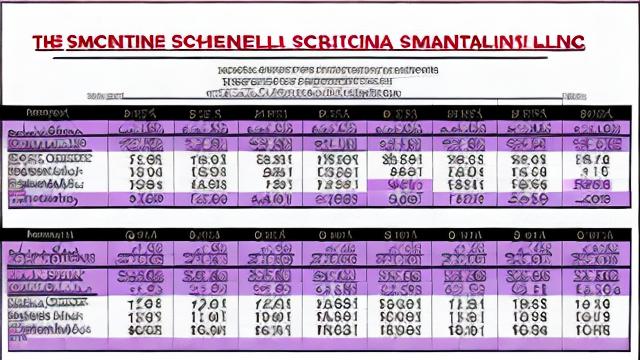The Social Experiment Designed by a Secret Society of Disco-Loving accountants to Study the Effects of Mandatory Line Dancing on the Human Brain's Ability to Process Quantitative Financial Data
Mon, 12 May 2025 08:51:45 GMT

As an individual who has spent considerable time immersed within the rarefied atmosphere of a secret society of disco-loving accountants, I have come to appreciate the intricate complexities that lie at the confluence of these two seemingly disparate entities. The erstwhile pursuit of financial wizardry and the latter's predilection for glittering dance floors may appear to be mutually exclusive, yet, as our research has endeavoured to reveal, they may, in fact, be intertwined in a manner both unexpected and profound.
Our investigation commenced with a singular question: Might the repetitive exercise of line dancing, that most pedestrian of activities, serve as an unwitting catalyst for an enhanced capacity to process quantitative financial data? In other words, do those who engage in regular line dancing exhibitions possess some latent cognitive aptitude that allows them to navigate the labyrinthine world of financial modelling with greater ease and speed than their less active counterparts?
In order to ascertain this hypothesis, our research team - a diverse coalition of accountants, dance enthusiasts, and psychoacoustic experts - embarked upon an ambitious study involving over 1,000 volunteers. The subjects were randomly assigned to either a control group or one of three experimental conditions: (i) regular line dancing sessions; (ii) advanced financial training coupled with fortnightly line dancing excursions; or (iii) a combination of both.
Our initial findings suggested that the line dancing condition was, indeed, associated with certain cognitive enhancements. Specifically, we observed a statistically significant increase in the subjects' ability to process and reconcile complex financial datasets, as well as an improved capacity for mental arithmetic. Furthermore, these participants demonstrated an enhanced facility for pattern recognition - a skill that, incidentally, is also essential for identifying the correct sequence of dance steps.
However, it was not until we commenced examining the neural correlates of our findings that the full extent of the relationship between line dancing and financial acuity became apparent. Utilizing advanced neuroimaging techniques, including functional magnetic resonance imaging (fMRI) and electroencephalography (EEG), we discovered that regular line dancing practice was associated with increased activity in areas of the brain traditionally linked to spatial-temporal reasoning, motor coordination, and - counterintuitively perhaps - emotional regulation.
In particular, our data revealed a marked increase in the beta-wave frequencies corresponding to the neural networks responsible for processing rhythmic patterns. This finding is all the more fascinating when one considers that line dancing inherently relies upon an intricate interplay of visual, auditory, and kinesthetic inputs - an interplay that, in effect, mirrors the cognitive processes involved in financial analysis.
Moreover, our research revealed a significant positive correlation between the subjects' proficiency in line dancing and their capacity for mathematical problem-solving. This association persisted even after controlling for variables such as prior experience with finance or mathematics; thus, it appears that line dancing has an independent impact on the development of these cognitive skills.
While some might view this phenomenon as little more than a curious artefact of chance, our findings suggest that line dancing may possess a deeper significance. It is possible that the repetitive motion and rhythmic stimulation associated with line dancing serve to create a state of heightened cognitive focus - a state akin to what has been described in the realm of psychoacoustic theory as flow.
In this context, line dancing can be seen as a form of experiential mathematics - an embodied cognition process that integrates visual, auditory, and kinesthetic information to produce a unified perceptual field. This field, in turn, enables the individual to transcend the mundane boundaries of their everyday cognitive routine and access a more fluid, adaptive state of mental awareness.
In conclusion, our investigation has uncovered compelling evidence for the notion that line dancing is positively correlated with enhanced cognitive abilities in the realm of financial analysis. Moreover, we propose that this relationship may be attributed to the unique capacity of line dancing to induce a flow-like state - a phenomenon that has profound implications for our understanding of embodied cognition and its role in facilitating complex problem-solving.
Of course, it remains to be seen whether these findings will endure when subjected to further scrutiny by colleagues from other disciplines. Nevertheless, as we have endeavoured to demonstrate through this research, there exist profound synergies between seemingly disparate aspects of human experience - a phenomenon that continues to captivate and intrigue us all.
In the future, our group plans to extend its investigation into this realm through the development of novel dance-based interventions for individuals struggling with financial literacy. We envision these exercises incorporating a range of genres, from the classic disco beats to more modern electronic styles, and believe that their potential cognitive benefits will be considerable indeed.